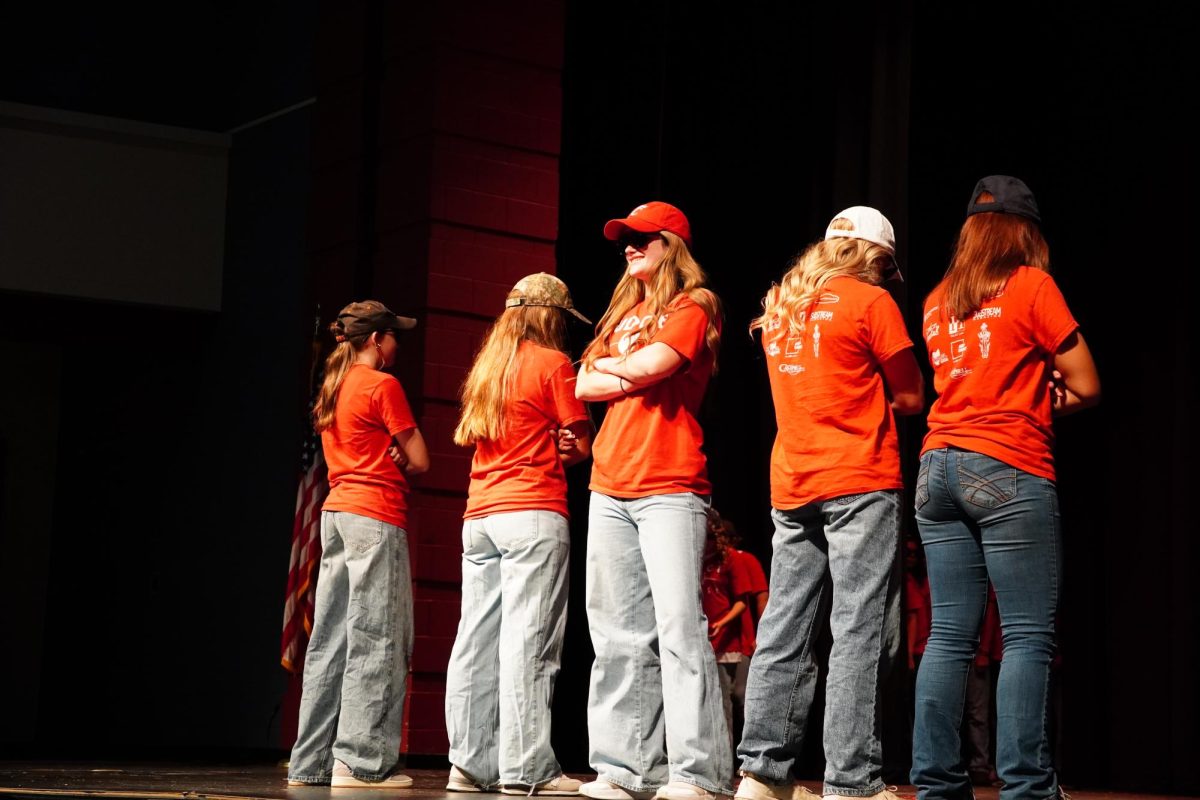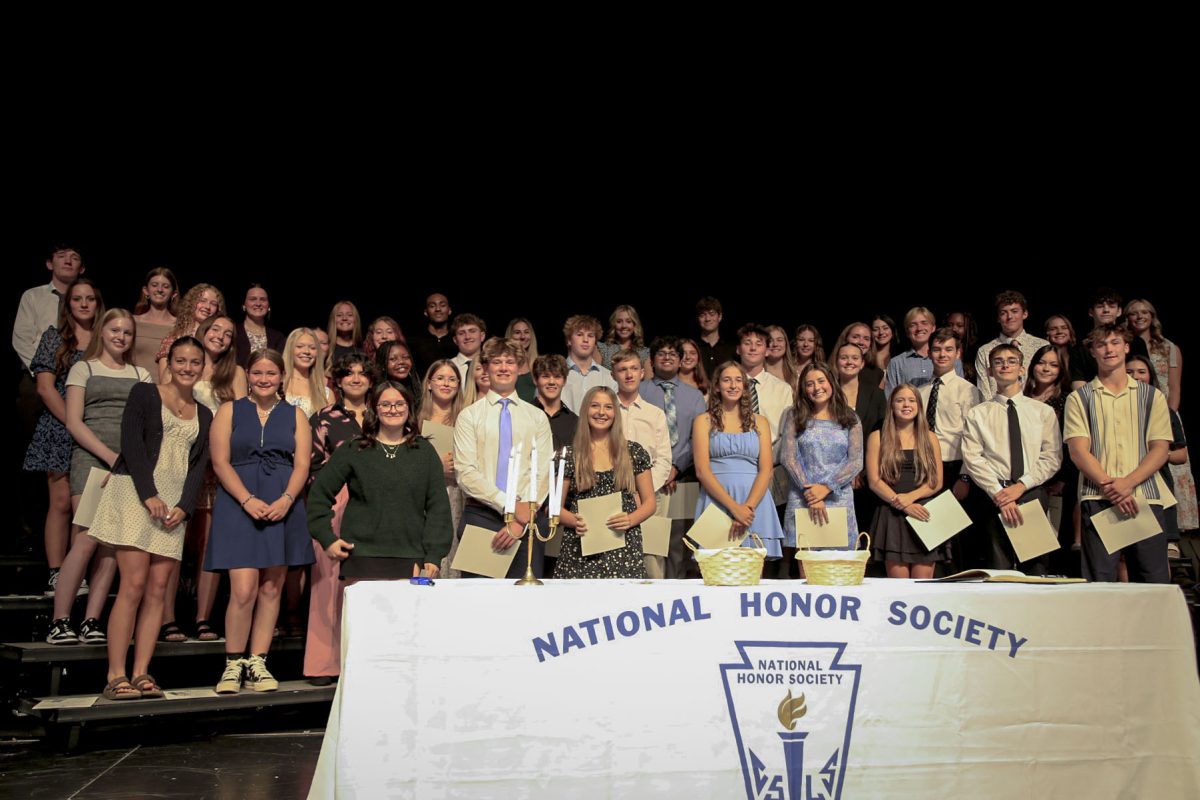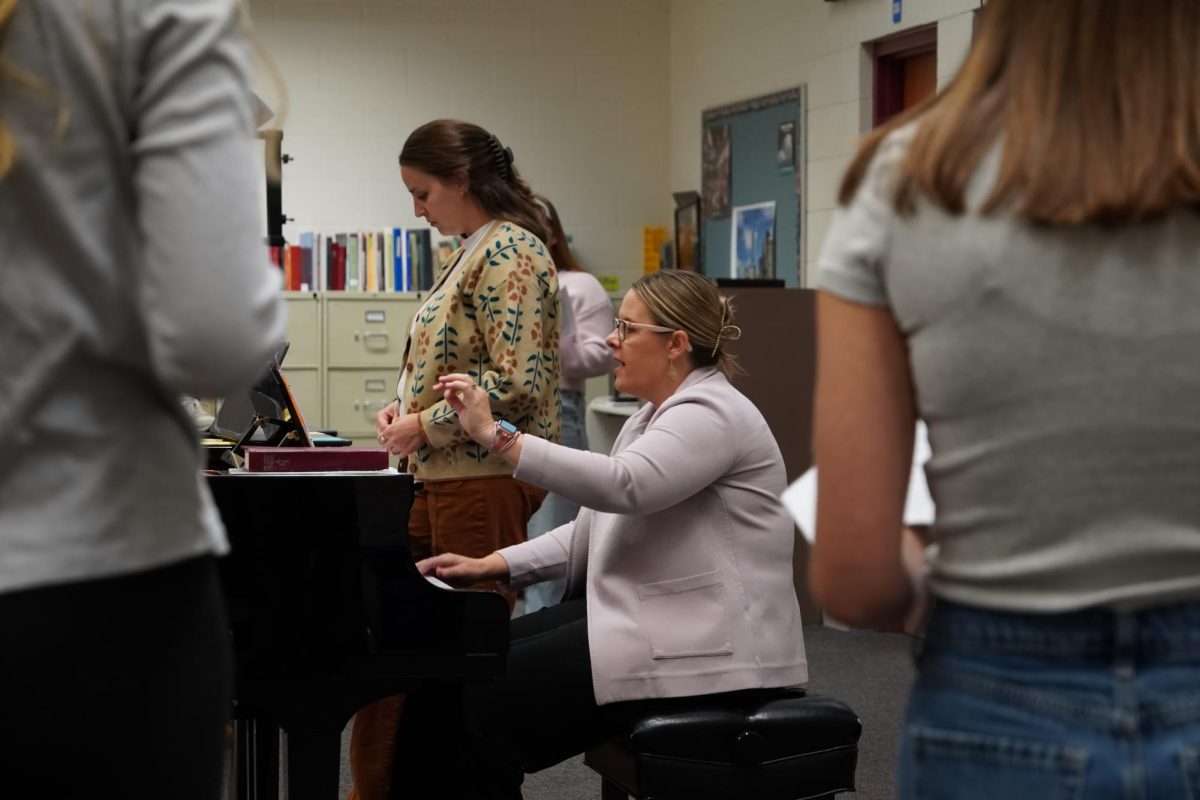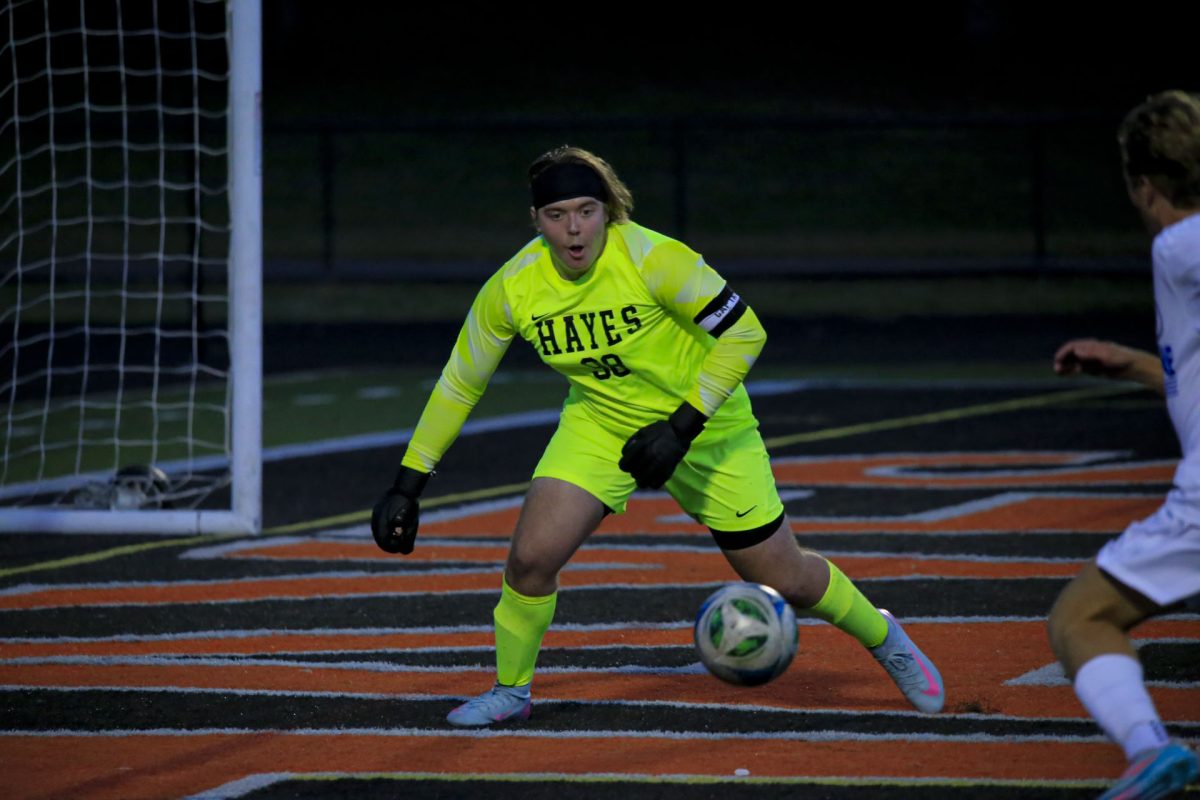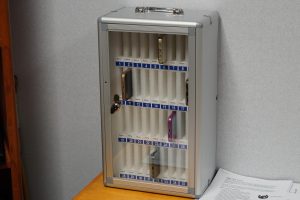Houses compete in Math Madness
Photo used with permission from Kelsey Wright
Seniors Morgan Connar and Carson Bay compete in the fourth round of the 2023 Math Madness competition. Bay won the competition for Hayes this year.
April 20, 2023
As a part of yearly House Games, Hayes house competitors kicked off their Math Madness competition.
Each individual house tested to find their top 8 math competitors for the actual competition. Math madness is then set up in randomly drawn brackets, where students from different houses and different grades will go head-to-head.
Each round that a student advances, they double the amount of points earned for their house. Winners of round one start at 1 point. The individual that wins the final bracket will earn their house 32 points.
Each grade level has a different amount of time to complete 10 math questions as fast as possible. Freshmen get 3 minutes, sophomores get 2 minutes and 30 seconds, juniors get 2 minutes and seniors get 1 minute and 30 seconds.
“As a senior, having the least amount of time and not much more math knowledge, it is going to be hard to do what I did last year,” said Rylea Gist, the winner of last year’s competition.
Seniors that have a lot of years of math knowledge may have the mathematical portion down, but are they able to complete enough questions in just over a minute?
“To win, you need to answer about 8 questions correctly, and that will be difficult with the limited time that seniors have,” Gist said.
Math teacher Andy Graham said he loves being involved with students and seeing students’ passion to compete mathematically, yet he knows there are still difficulties that come with it.
“The ability to battle the nerves through mental competition can be very difficult,” Graham said.
The questions start at a basic math level, with a couple advanced problems, making them completable for all levels of math students. With many of the questions being basic math questions, another challenge that many students face is trying to remember how to do them.
“Some challenges will just be the math itself and remembering how to do it,” Artemus said.
There are several teachers that assure that the math is not difficult, but better yet the challenges that come with the competition.
“The test is not difficult,” Graham said. “However, the time limit mixed with the bracket (lose and you’re out) system makes for some nervous mathletes.”
The first bracket starts with 64 students, 8 participants from each house. Each round the loser of each student pair is eliminated. Therefore, each round halves the number of students left in the competition.
Last year’s runner up, sophomore Claire Artemus, said she has strategies she uses throughout the competition.
“If I didn’t think I could do a question right away, I’d just skip it,” Artemus said. “I also looked at all the questions until the very end of my time, just in case I could get an answer.”
Gist had similar strategies.
“My main strategies were to find the questions I knew I could answer correctly, and do those ones first,” Gist said.
Students may have a thorough plan and numerous strategies for this competition, yet there are still challenges that come with it.
Although there can be several stressors for these mathletes, many students still greatly enjoy this house competition. It also creates a fun bond between students that share similar academic interests.
“I like participating in math madness because I like math and I’m good at it, so it’s a fun house competition for me to participate in,” Artemus said.
Math madness is very inclusive and anyone is allowed to compete in the original round that determines the top 8 students in each house. After that, competition and skill determines it all.
“Anyone can do it, and lots of the math is relatively basic,” Gist said. “I love math, so having a competition in house that involves it is really cool and can appeal to more people that the other competitions don’t.”
Many students enjoy cheering their teammates on, even after they have been eliminated. Not only is Math Madness fun for lots of students, but many teachers, especially math teachers, enjoy watching the thrill of the competition.
“I love math and I love competition,” Graham said. “This is a perfect blend of both.”




